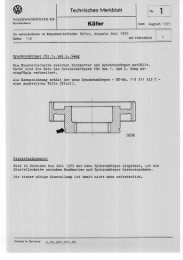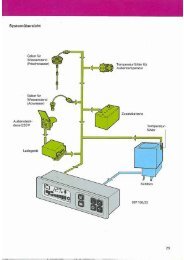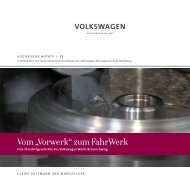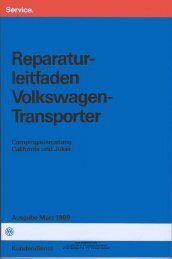HN 2: The British and their Works
HN 2: The British and their Works
HN 2: The British and their Works
You also want an ePaper? Increase the reach of your titles
YUMPU automatically turns print PDFs into web optimized ePapers that Google loves.
<strong>The</strong> factory management deliberated on possible solutions at<br />
the beginning of July 1946. At the Laagberg camp, 12 hutments<br />
could be converted, providing accommodation for 1,200 men,<br />
albeit this was pure mass-housing. <strong>The</strong> head of the construction<br />
department held out the prospect of accommodation for 1,800<br />
with the construction 18 further hutments. Both of these projects,<br />
which would cost 547,000 Reichsmark, had to be approved<br />
by Major McInnes. In addition to these medium-term plans,<br />
there was the short-term possibility of providing accommodation<br />
for 300 workers within one month. However, recent experience<br />
militated against the further construction of mass<br />
accommodation. <strong>The</strong> factory management had attempted to<br />
house the single workers from the district of Helmstedt in<br />
Wolfsburg, because the shuttle service which had been set up<br />
for them had come to a st<strong>and</strong>still for lack of new tyres. However,<br />
these employees showed little inclination to give up <strong>their</strong><br />
accommodation in order to live in hutments. <strong>The</strong> resettlement<br />
of workers from Soltau had also turned out to be impracticable,<br />
because there was no vacant accommodation for <strong>their</strong><br />
families. 102<br />
It was thus that the suggestion of the personnel manager Karl<br />
Huhold, to make the "very nice" Reislingen camp available for<br />
families, met with general approval. It was in line with the<br />
necessity of settling the families of new recruits, who were<br />
currently very badly housed, in Wolfsburg. A plan was to be<br />
worked out for exchanging the people currently resident in the<br />
Reislingen camp – in part construction workers belonging to<br />
external companies – for the families housed in the hutments.<br />
<strong>The</strong> plans to convert the accommodation units provoked the<br />
objection that the construction materials required for the project<br />
had been carefully put aside for winterproofing. Hermann<br />
Münch countered this by insisting that housing construction<br />
had absolute priority. In addition to the "accommodation<br />
exchange measures" the factory management declared the conversion<br />
of the Laagberg camp <strong>and</strong> the "youth camp" a priority<br />
task. What had been considered to be the ideal solution to the<br />
housing problem was not available. This was the former "SS<br />
camp", where 400 people could have been housed immediately<br />
at minimal cost. Münch said that he would concern himself with<br />
getting these hutments released.<br />
A further housing possibility was blocked by the declared intention<br />
of the town council to accommodate the hospital, which it<br />
had taken over in the previous year, in the single persons’ hostel.<br />
To date however it had done nothing to implement this project.<br />
After several unsuccessful attempts to get a decision on this,<br />
Münch now gave the municipal administration a period of<br />
grace to 8th August 1946. Under this pressure the council finally<br />
agreed that the single persons’ hostel should be used to accommodate<br />
factory employees. It was reserved for a later decision<br />
whether the hostel should subsequently be used for setting up<br />
a hospital for the town of Wolfsburg. This modest success in the<br />
procurement of housing was almost simultaneously overshadowed<br />
by a confiscation order of the <strong>British</strong> town quartermaster.<br />
This applied to the Hohenstein camp, the municipal construction<br />
office hutments, the camp to the east of Rothehofstraße,<br />
the camp to the south of the fire brigade as far as the Ernst-<br />
Toller-Straße, five hutments to the west of the municipal<br />
utilities building <strong>and</strong> the camp between the Fallerslebener<br />
Straße <strong>and</strong> the railway. 103<br />
42 43<br />
WORKFORCE TURNOVER
















